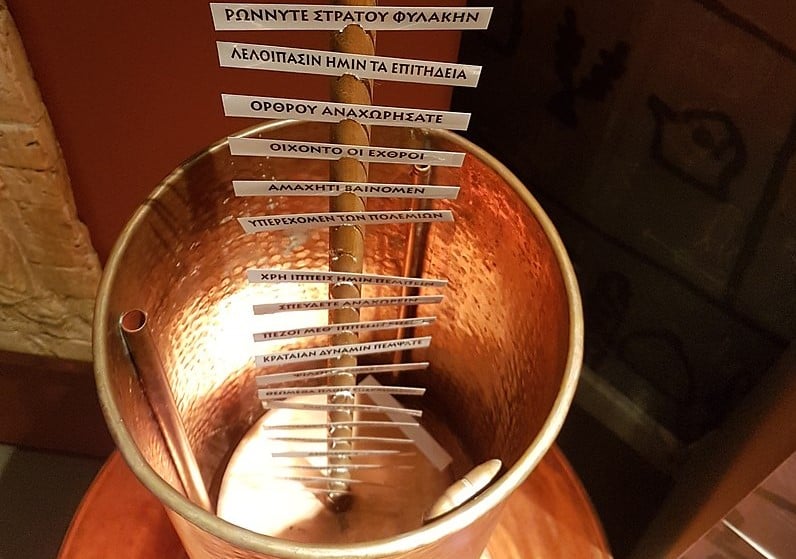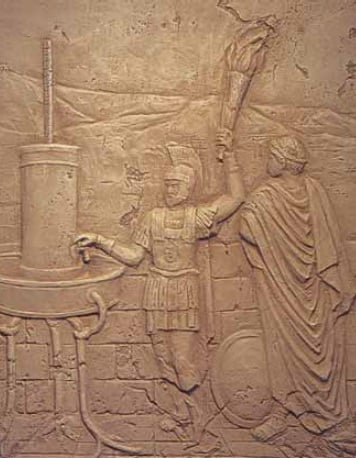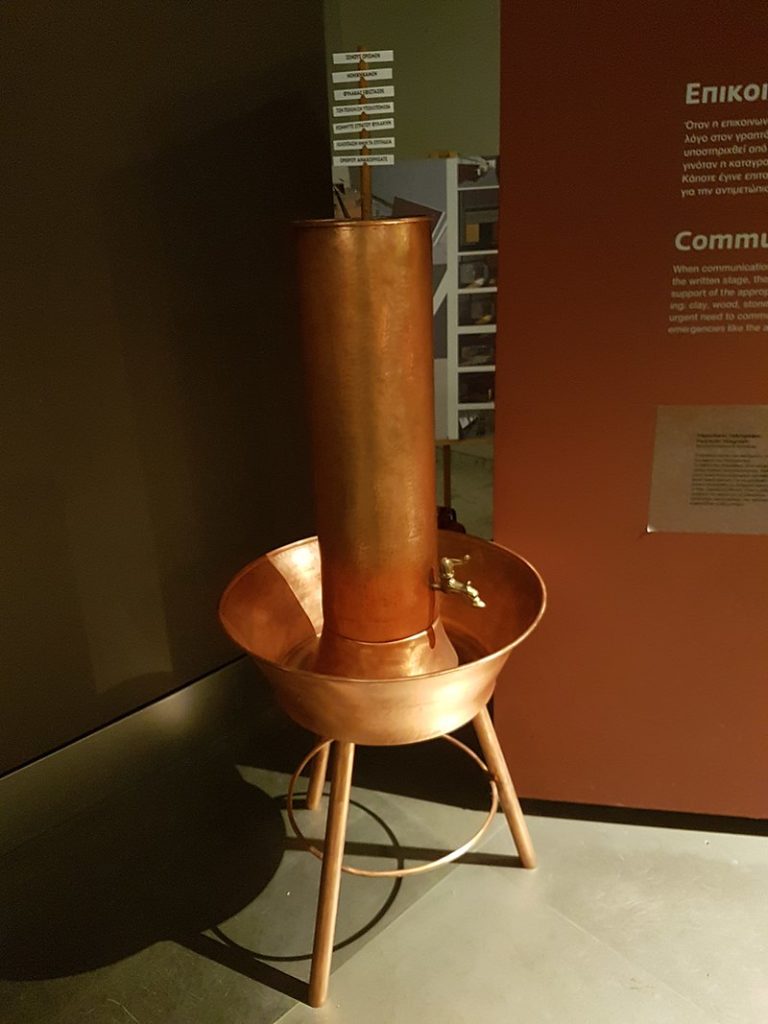
The hydraulic telegraph, invented by the ancient Greeks, had the capacity to send long-distance messages as early as the fourth century BC.
The ingenious apparatus is dubbed as the world’s first telecommunications device. It was designed for military purposes by Aeneas Tacticus with the purpose of more efficiently sending pre-arranged messages across the vast empire of Alexander the Great.
Operation of the hydraulic telegraph is described in detail in Aeneas’ work on sieges, Poliorcetika, which was retrieved by Polybius. The messages sent were along the lines of: “Enemy on sight,” “Cavalry attack,” “We need wheat,” “Infantry in action,” “Cyclical movement,” and so on.
Hydraulic Telegraph Operation
The hydraulic telegraph was used by the ancient Greeks during times of war. There were numerous telecommunication groups of beacons placed on carefully selected hills in ancient Greece. The apparatus was operated by messengers who stood at a given hill and used clay or metal cylindrical containers of equal size filled with water up to three cubits in height and up to one cubit in width.
In each container, there was a cork floating. It was a little narrower than the mouth of the container. Rods, divided into equal parts, were inscribed with the same pre-agreed messages on each and attached to the center of the floats.
The operator-transmitter would lift a burning torch, signaling the operator-receiver for the sending of the message and then waiting for confirmation with the rising of the torch from the receiver. Thereafter, the transmitter lowered his torch so as to signal for the simultaneous opening of both taps on their devices.
The rods with the messages descended, and when the desired message to be sent
appeared at the rim of the transmitter’s device, he raised the torch once again, signaling the receiver for the simultaneous interruption of the outflow.

Due to the geometric similarity of the devices, the desired message also appeared on the receiver’s device. It was of utmost importance that there be absolute simultaneity between the transmitter and receiver operators. Both had to be quite careful not to send the wrong message, which would be disastrous in wartime. The description of the hydraulic telegraph was rescued by the historian Polybius in the second century BC.
Advancement in Communication Technology
The technology of the hydraulic telegraph seems rather simple, but its invention was marveled by ancient Greeks as a significant advancement in communication technology, as it allowed for pre-determined messages to be sent across long distances.
In the event of an intrusion or enemy approaching, they would only witness the brief torch flashes and would not be able to intercept the message in any way.

This development was also a great advancement in military communication and strategy. Messages were sent from Sicily to Carthage during the First Punic War (264 to 241 BC) using the hydraulic telegraph, also known as a Semaphore line.
Through this noteworthy invention, the military then had the ability to send specific messages that allowed other groups of military personnel, as well as civilians, to better prepare for potential land or sea invasions.
This early form of long-distance communication was especially innovative for its time, and it paved the path for future forms of communications, which have led to the numerous methods currently available.
Today, there is a replica of the hydraulic telegraph of Aeneas Tacticus and pertinent messages from periods of war at the OTE Group Telecommunications Museum in Athens.
See all the latest news from Greece and the world at Greekreporter.com. Contact our newsroom to report an update or send your story, photos and videos. Follow GR on Google News and subscribe here to our daily email!



